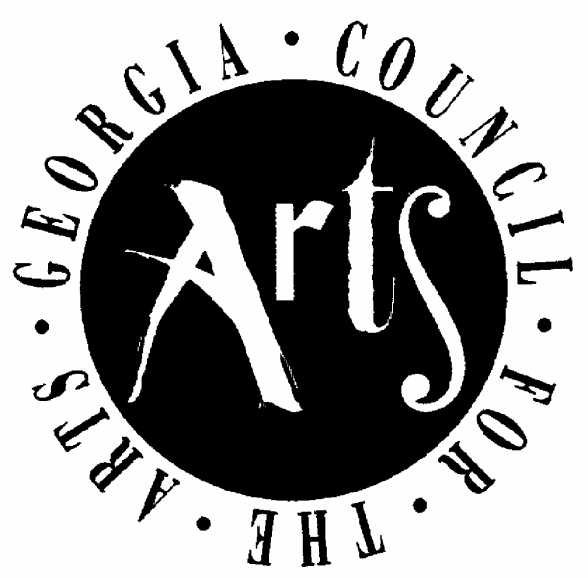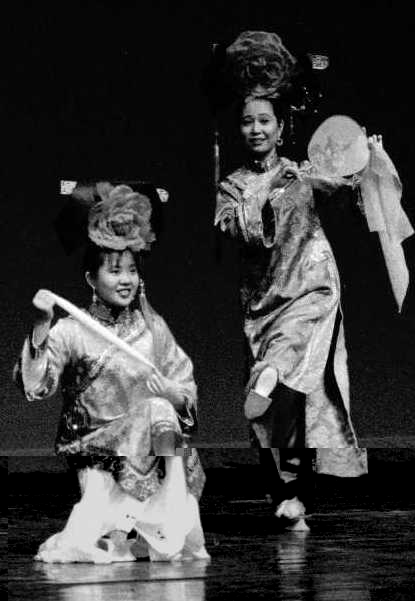 In
March 2002, the Atlanta
Chinese Dance Company took its audience on A Journey With The Phoenix
across a broad spectrum of Chinese culture, both past and present.
In May 2003, we embarked on a search for the Forbidden City. Not the remains that
stand today behind Tiananmen Square, but the Forbidden City at the
height of its lavish glory during the Qing Dynasty, when it was home to
the Emperor and his family. The simplicity of village life met the
extravagance of the royal court as the ACDC took us In Search Of The
Imperial Palace.
In
March 2002, the Atlanta
Chinese Dance Company took its audience on A Journey With The Phoenix
across a broad spectrum of Chinese culture, both past and present.
In May 2003, we embarked on a search for the Forbidden City. Not the remains that
stand today behind Tiananmen Square, but the Forbidden City at the
height of its lavish glory during the Qing Dynasty, when it was home to
the Emperor and his family. The simplicity of village life met the
extravagance of the royal court as the ACDC took us In Search Of The
Imperial Palace.
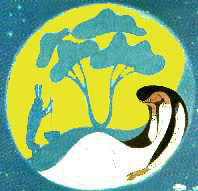 As our
story begins, it is the evening of the
Moon (or Mid-Autumn) Festival, and Xiao Lan Hua (“little girl” in
Chinese) and her friends are gleefully celebrating the holiday which
takes place on the fifteenth day of the eighth month of the lunar
calendar. With lanterns in their hands, they watch the moon intently
from their village in the Anhui province of China, imagining that the fairy
tale character Chang E (pronounced “chang er”) and her little rabbit are
there. As the other children slowly lose interest and walk away, Xiao
Lan Hua is mesmerized by the beauty of Chang E, and fails to realize
that she has become separated from her friends. Discovering that she is
lost, Xiao Lan Hua begins to worry.
As our
story begins, it is the evening of the
Moon (or Mid-Autumn) Festival, and Xiao Lan Hua (“little girl” in
Chinese) and her friends are gleefully celebrating the holiday which
takes place on the fifteenth day of the eighth month of the lunar
calendar. With lanterns in their hands, they watch the moon intently
from their village in the Anhui province of China, imagining that the fairy
tale character Chang E (pronounced “chang er”) and her little rabbit are
there. As the other children slowly lose interest and walk away, Xiao
Lan Hua is mesmerized by the beauty of Chang E, and fails to realize
that she has become separated from her friends. Discovering that she is
lost, Xiao Lan Hua begins to worry.
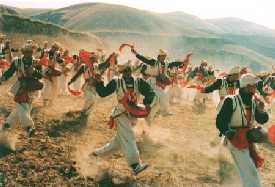
Luckily enough, an
older girl named Da Lan Hua (“big girl” in Chinese) comes by. Seeing
that Xiao Lan Hua is upset, Da Lan Hua tries to cheer her up with her
colorful fan and scarf. Xiao Lan Hua is amused, but she still wants to
find her friends. She asks Da Lan Hua for help, but unfortunately Da
Lan Hua has no idea as to of their whereabouts. Xiao Lan Hua is
disappointed, but she says, “That’s okay. But, you know, I have always
had one dream in my lifetime.” Da Lan Hua, replies, “And what is that?
Maybe I can help you.” Excited, Xiao Lan Hua answers, “I have always
wanted to see the Forbidden City in Beijing and to meet the emperor.”
To her surprise, Da Lan Hua says, “I have always wondered about the
palace too! We shall look for it together.” Neither Da Lan Hua and
Xiao Lan Hua know the way, but they hope that their drive and
determination will lead them to their dream.
Da
Lan Hua and Xiao Lan Hua begin their trek, and they ask everyone they
see how to get to Forbidden City. Along the way, passing through many
seasons, they encounter people of all ages and ethnicities in their
daily lives. Miraculously, their constant questioning leads them in the
right direction. A problem arises when they reach Huang He (or “Yellow
River”, named for its murky color), an area known for its horrendous
flooding. Not intimidated
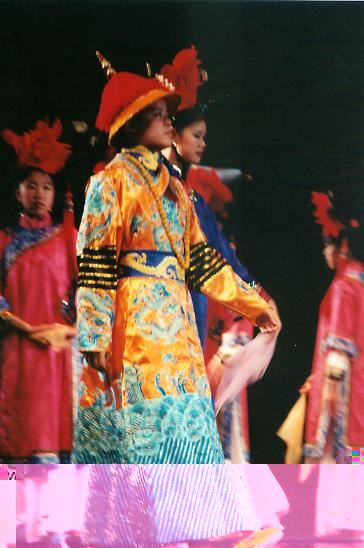 by the worst of nature, Da Lan Hua and Xiao
Lan Hua successfully ford Huang He alongside the people of the
Yellow River Basin (represented by
guest artist Tian Shuai of the Atlanta Ballet Company). Through their
struggles, Da Lan Hua and Xiao Lan Hua finally realize their dream and
make it to the Forbidden City.
by the worst of nature, Da Lan Hua and Xiao
Lan Hua successfully ford Huang He alongside the people of the
Yellow River Basin (represented by
guest artist Tian Shuai of the Atlanta Ballet Company). Through their
struggles, Da Lan Hua and Xiao Lan Hua finally realize their dream and
make it to the Forbidden City.
In the palace of
Forbidden City
in Beijing, the emperor of the Qing (or Manchu) dynasty celebrates his
birthday. Many festivities are planned, including classical and
folk dances from different parts of the country. The evening
starts with a procession of the Empress and twelve Manchurian
concubines, followed by an impressive sword
dance from Dun
Huang and a beautiful Mongolian dance.
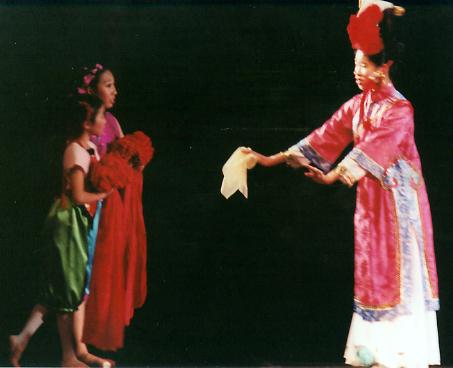
The Da Lan Hua and
Xiao Lan Hua finally arrive at the palace. Promising that they can
provide entertainment for the Emperor, Da Lan Hua and Xiao Lan Hua are
admitted to the most beautiful building that they have ever seen in
their lives. After enjoying a few dances with the emperor, Da Lan Hua
and Xiao Lan Hua perform, giving the Emperor peach-shaped buns as a
present (a customary birthday gift symbolizing longevity). The Emperor
is so impressed by their lovely performance that he invites them to stay
with him at the palace. Although this high honor is very rare, Da Lan
Hua and Xiao Lan Hua both agree that there is no place like home.
Back home in the
country, Xiao Lan Hua’s friends eagerly await her return. As Da Lan Hua
takes her to them, Xiao Lan Hua reminisces about her trek to the
Forbidden City. She tells her friends about her dream come true, but
none of them believe her. But Xiao Lan Hua is not worried, because all
of you in the audience are witnesses.
This production was
created and choreographed by Hwee-Eng Y. Lee, President and Artistic
Director of the ACDC. Ms. Lee's formal dance training includes ballet,
jazz, and modern, as well as traditional Chinese dance. She founded the
Company twelve years ago with the goal of serving not only Atlantans of
Chinese descent, but the metropolitan area as a whole. The Company has
over seventy members, from age 5 to adult. It has performed at the
Opening and Closing Ceremonies of the 1996 Olympics; the Robert Ferst
Center for the Arts; the Rialto Center for the Arts; the Festival of
Trees; the Georgia Tech International Festival; the King Center;
Underground Atlanta; Emory University; and at numerous Chinese New Year
celebrations, and public and private schools.

 As our
story begins, it is the evening of the
Moon (or Mid-Autumn) Festival, and Xiao Lan Hua (“little girl” in
Chinese) and her friends are gleefully celebrating the holiday which
takes place on the fifteenth day of the eighth month of the lunar
calendar. With lanterns in their hands, they watch the moon intently
from their village in the Anhui province of China, imagining that the fairy
tale character Chang E (pronounced “chang er”) and her little rabbit are
there. As the other children slowly lose interest and walk away, Xiao
Lan Hua is mesmerized by the beauty of Chang E, and fails to realize
that she has become separated from her friends. Discovering that she is
lost, Xiao Lan Hua begins to worry.
As our
story begins, it is the evening of the
Moon (or Mid-Autumn) Festival, and Xiao Lan Hua (“little girl” in
Chinese) and her friends are gleefully celebrating the holiday which
takes place on the fifteenth day of the eighth month of the lunar
calendar. With lanterns in their hands, they watch the moon intently
from their village in the Anhui province of China, imagining that the fairy
tale character Chang E (pronounced “chang er”) and her little rabbit are
there. As the other children slowly lose interest and walk away, Xiao
Lan Hua is mesmerized by the beauty of Chang E, and fails to realize
that she has become separated from her friends. Discovering that she is
lost, Xiao Lan Hua begins to worry.
 by the worst of nature, Da Lan Hua and Xiao
Lan Hua successfully ford Huang He alongside the people of the
Yellow River Basin (represented by
guest artist Tian Shuai of the Atlanta Ballet Company). Through their
struggles, Da Lan Hua and Xiao Lan Hua finally realize their dream and
make it to the Forbidden City.
by the worst of nature, Da Lan Hua and Xiao
Lan Hua successfully ford Huang He alongside the people of the
Yellow River Basin (represented by
guest artist Tian Shuai of the Atlanta Ballet Company). Through their
struggles, Da Lan Hua and Xiao Lan Hua finally realize their dream and
make it to the Forbidden City. 
